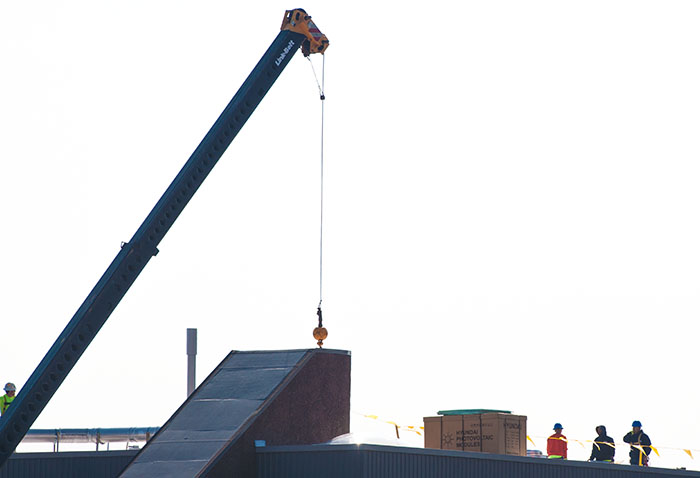 I’ve wanted to write about this for months, but the College beat me to it: over the past few years Trinity has installed quite a few solar panels on its flat roofs. One could not fail to notice the installation on the roofs of Ferris and Life Science – an enormous crane had blocked street access and parking lots for days last summer, but a quick check in Google Earth showed the true extent of the project. Ferris, LSC, Buldings and Grounds as well as Trinity Commons are covered with solar panels. The south facing roofs of the new town houses also have solar panels installed. That’s quite a step up from the few solar panels that were installed many years ago on the roof of the Treehouse.
I’ve wanted to write about this for months, but the College beat me to it: over the past few years Trinity has installed quite a few solar panels on its flat roofs. One could not fail to notice the installation on the roofs of Ferris and Life Science – an enormous crane had blocked street access and parking lots for days last summer, but a quick check in Google Earth showed the true extent of the project. Ferris, LSC, Buldings and Grounds as well as Trinity Commons are covered with solar panels. The south facing roofs of the new town houses also have solar panels installed. That’s quite a step up from the few solar panels that were installed many years ago on the roof of the Treehouse.
For the Trinity News article on the most recent solar panels you can follow this link. And if you’d like to see where they are you can see them in the image below on the roofs of Ferris, LRC, Trinity Commons and the Facilities Management building. If you look closely you can see that the building south of the hockey rink is full of solar panels as well. Interesting enough you have to look for them in Google Earth. Google maps has slightly older imagery, which shows the roofs prior to installation.
Interesting enough you have to look for them in Google Earth. Google maps has slightly older imagery, which shows the roofs prior to installation.


